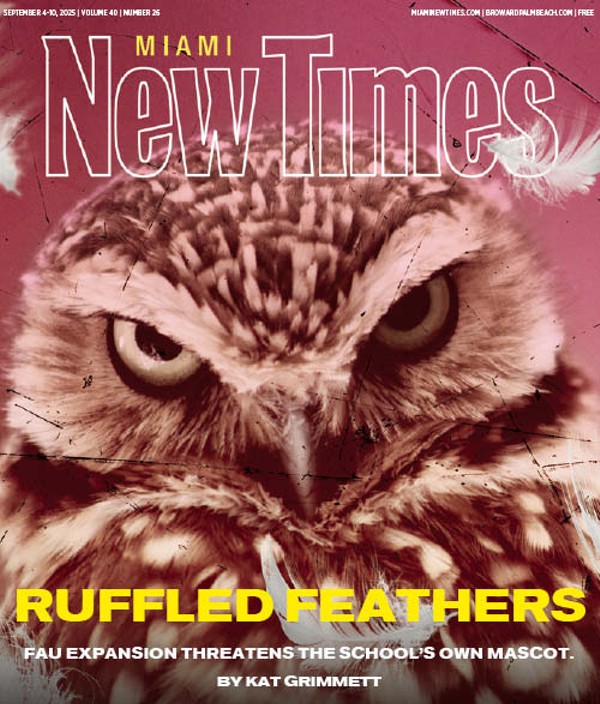It's the kind of forward-thinking experience David Bowie himself might have predicted. Just for one day, in theaters across the country, a movie about a museum exhibition (featuring the rocker's groundbreaking albums, outlandish costumes, and clips from his artistic videos) will briefly tantalize the world — and be gone.
Screening only on Tuesday, September 23, the Hamish Hamilton-directed documentary David Bowie Is serves, above all, as a reminder of Bowie's artistry, his creativity, his fearlessness. If you've forgotten why you loved Ziggy or that eerie experimenter bunking in Berlin, this thrilling bit of cinema will surely lure you back.
"I wasn't the biggest Bowie fan in the world," says Hamilton, a refreshingly straightforward director who's best-known for TV work like The Victoria's Secret Fashion Show. "I was drawn to the project because of the music. And the strangeness of the request. Since the filming was of a live event" — last summer's exhibition at the Victoria and Albert Museum in London — "they were looking for somebody who could do live. That's me. I was sort of a conduit between David's creativity and the genuine passion, knowledge, and care of the curators [Victoria Broackes and Geoffrey Marsh]."
Hamilton's movie gracefully captures the exhibit. Crisply shot, briskly paced, it features all things Bowie: handwritten lyrics, ambisexual outfits, drawings and photos of the gender-bending genius, and scores of other objets d'art. (Especially memorable is the startling image of the singer in a gaucho hat, Great Dane by his side.)
It's often said about great concert movies that watching them is just like being there. That's the case with David Bowie Is, except your being there means being in the museum, watching the kids dressed up like their hero, listening to the curators and their special guests. The film highlights excerpts from presentations dedicated to his videos and recordings — especially his scramble to make Diamond Dogs rather than the 1984 that the Orwell estate had nixed.
When he first saw the exhibition, Hamilton knew exactly how he was going to sequence and shoot it. "I walked around, met Victoria and Geoff, and instantly made the decision they'd have to be the hosts of both the live experience and the movie," says Hamilton. "The curators had done such a great job, I thought, 'Let's give these two their rightful place here.'"
In addition to Broackes' and Marsh's scholarly talks about Bowie, the film benefits from electric appearances by several of the artist's acolytes. Pulp's Jarvis Cocker, playwright Hanif Kureishi, and designer Kansai Yamamoto all pay homage, all pointing up how Bowie made them feel they could accomplish anything. Kureishi claims the artist showed confused English kids that "we could have interesting lives."
Yamamoto speaks of the night in '72 when Bowie called Japan to invite him to a performance at Radio City Music Hall. Yamamoto was thrilled to see this gorgeous creature onstage — with one reservation. Wow, he's wearing my clothes, Yamamoto had thought. I design ladies' clothes.
That's how ballsy Bowie was back in those straitlaced days. He was also prescient, as curator Marsh points out: "If you look at the video [for 1980's 'Ashes to Ashes'], the characters are carrying things that look just like iPads." (Just compare clips like "Life on Mars" to the so-called "groundbreaking" videos by Duran Duran in the '80s — which now look like expensive beer commercials.)
For all the marvels, the unspoken organizing principle of the experience seems to be the artistic ambivalence lying at the heart of David Bowie. "On one hand, you've got an artist who's unsentimental, always moving forward," Marsh says. "Yet his archives have approximately 100,000 pieces. David doesn't look back, yet he's kept enormous amounts of work. If there's one thing we tried to get at, [it's that] the man is a paradox. Also, that David Bowie is a construct. In many ways, he's still just David Jones. When he played the Concert for New York [a post-9/11 benefit on October 20, 2001], he dedicated his set to his local firehouse. Part of what makes him so fascinating is he's also a down-to-earth man."
And the Starman was earthbound enough not to interfere with the exhibition dedicated to him. "We were told from the beginning," says Broackes, "that David would not be involved. Initially, we'd have loved to have had him. But as you know, he's fantastically controlling with what he works on. So, had he been working with us, we'd have taken second place. Bowie let us walk through his archives and choose what we wanted, construct the narratives, and so on."
The film should have a double-edged effect. If you saw Bowie in the '70s, it should be quite moving. It's also bound to inspire new, impressionable fans — Bowie's oeuvre remains so modern that David Bowie Is will play as a call to arms to future visionaries.








